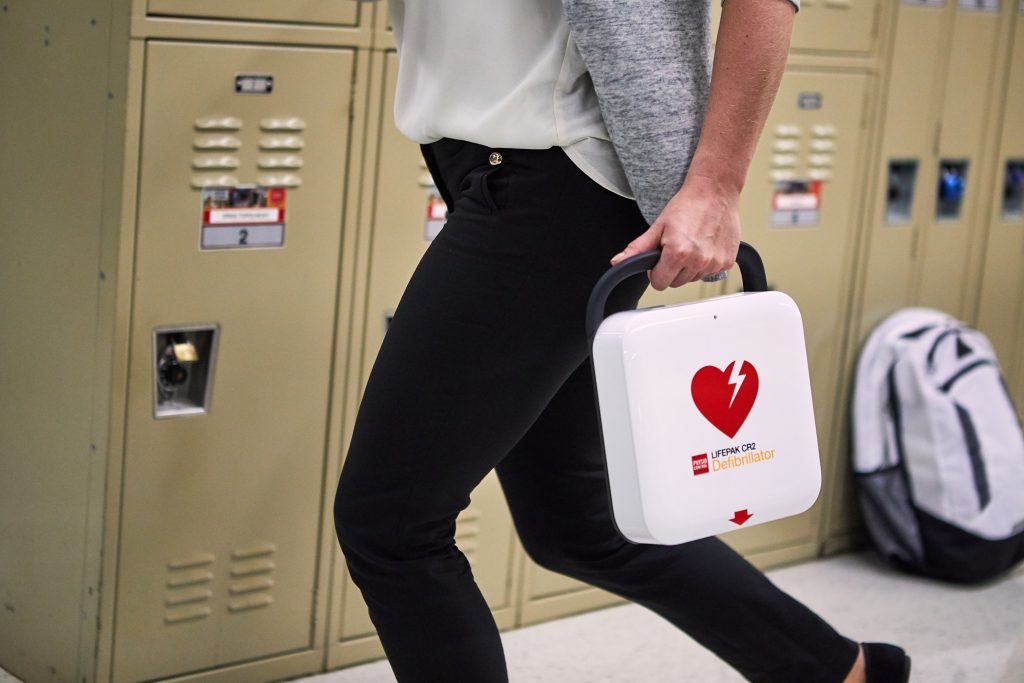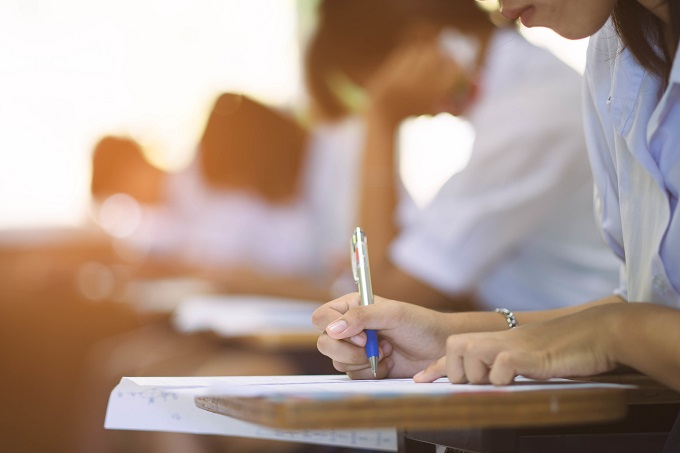How to save a life: The importance of AEDs
With more than 25,000 Australians annually facing sudden cardiac arrest, Automatic External Defibrillators are important in public spaces.

With a survival rate averaging just 1 in 10, the accessibility of AEDs becomes a pivotal factor in determining the outcome of a critical situation. The availability of an AED at your school can mean the difference between life and death for staff, parents, students or passers-by who suffer a sudden cardiac event.
Read the latest print edition of School News HERE
One of the primary reasons defibrillators are essential in schools is the rapid response, enabling educators and other school staff to become first responders before paramedics arrive. Sudden cardiac arrest is a time-sensitive medical emergency, and immediate intervention is crucial for a positive outcome. Early access to CPR and defibrillation increase a patient’s chance of survival, so ensuring an AED is accessible to staff and students is important.
In a medical emergency, a defibrillator checks the heart rhythm and can apply a measured electric shock to restore the heart to its normal rhythm. It will only deliver a shock if necessary, which means first responders cannot hurt someone by using a defibrillator.
Early CPR and access to a defibrillator can significantly increase the chances of surviving a cardiac arrest. In fact, defibrillation within the first few minutes of having a sudden cardiac arrest increases the chance of survival to more than 70 percent.
Conversely, without early defibrillation with an AED, less than five percent of cardiac arrest victims survive to be discharged from hospital.
And while ambulances are often able to quickly respond in metro areas, for schools in regional or remote areas, having an AED on hand could be the difference between life or death.
Having an AED available on site is a positive first step. Ensuring all educators, staff and school volunteers are trained in basic first aid as well as when to use an AED is essential.
Alarmingly, recent Heart Foundation research showed more than half of Aussies wouldn’t feel confident stepping in if they witnessed someone having a cardiac event. The survey of 7000-plus Australians also found a lack of awareness about AEDs. Nearly one in three people had never heard of the device, and 52 percent would not feel confident using an AED if they thought someone was having a cardiac event.
For schools, this means that staff and volunteer onboarding should include information about where the school’s AED and first aid kit is located and what to do in an emergency situation.
Heart Foundation General Manager of Heart Health, Bill Stavreski, urged Australians not to feel hesitant about using the lifesaving device in an emergency. “There’s a fear factor around defibrillators, but they are designed to be user-friendly and you don’t need to have medical training to help save a life,” he said.
“The step-by-step recorded instructions will guide you, and even if it turns out the person is not having a cardiac arrest, using the AED will not hurt them.
“Bystanders can be reluctant to step in if they haven’t been trained in CPR, but any attempt at resuscitation is better than none. Time is everything, because for every minute without defibrillation to restart the heart, chances of surviving drop by 10 per cent.”

For schools, first aid training for students could potentially increase overall school safety as more students are able to also become first responders. For high school students looking for casual or part time employment, having a first aid certificate could also place them in good stead for gaining employment.
If you are installing an AED on school grounds, be sure to work with a reputable company that can assist you in selecting an appropriate location for the AED as well as provide an extended warranty and technical support.
Your school defibrillator can be used again and again for many years providing that you follow the parts maintenance and replacement recommendations by the manufacturer. These devices do not have an expiry date and remain operable and effective as long as all the parts are kept in good working order.
Regular testing and inspections every three months are key to ensuring your school defibrillator is in good working order and ready to potentially save a life.
Scott Whimpey, Director at First Aid Accident and Emergency, said the new policy from Department of Education Western Australia is a great guide to base decisions off when purchasing an AED. “The policy stipulates that every public-school has at least one AED located at the sites main administration building; that AEDs must be purchased from reputable suppliers and be compliant with Australian Standards; and that AEDs must be placed in an area that is reasonably accessible and not exposed to environment where possible. AEDs should be made available for community use wherever possible.
“Now more than ever, state and federal governments are looking at ways to implement these life saving devices into community and business sectors,” Mr Whimpey said. “This has also been highlighted by the recent decision from the South Australian Government’s Automated External Defibrillators (Public Access) Bill 2022 which passed in November 2022.
“As part of each states policy for schools, teachers and non-teaching staff should be trained in CPR and First aid. This generally includes training in the use of an AED which covers all aspects of how to use the AED and how to maintain the device.”
Mr Whimpey said ideally, the AED should be accessible within three minutes of anyone in the school. “We recommend that the AED be placed at least in the administration block and where possible on an outside wall.”







